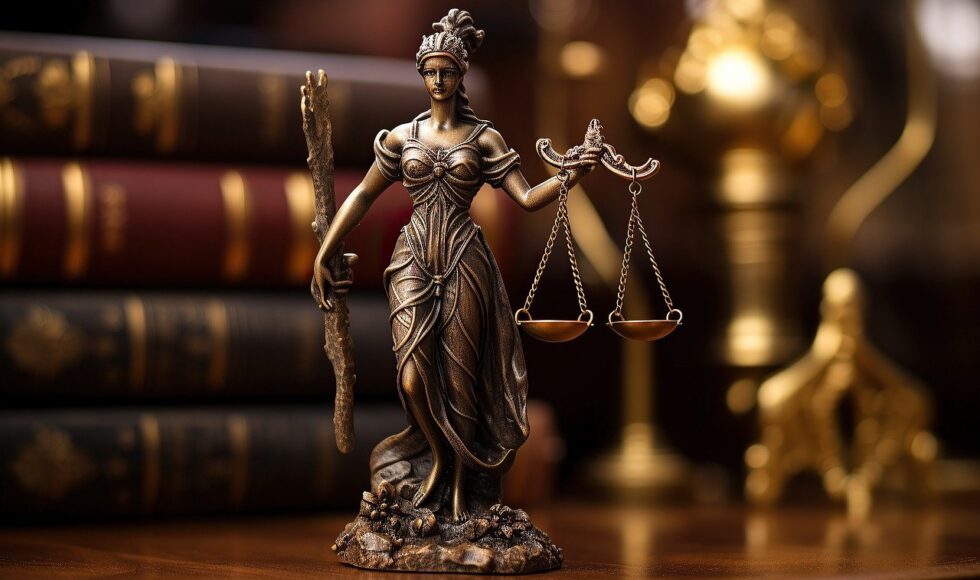Landmark Court Cases that Shaped Indian Law Post Independence: A Historical Perspective
India, as a nation, has witnessed several landmark court cases that have played a pivotal role in shaping its legal landscape. These cases have not only interpreted and clarified the provisions of the Indian Constitution but have also addressed critical social, political, and cultural issues. This article aims to provide a comprehensive overview of some of the most influential court cases that have had a lasting impact on Indian law post-independence.
1. The Kesavananda Bharati Case: Preserving the Basic Structure of the Constitution
The Kesavananda Bharati case, decided in 1973, is widely regarded as one of the most significant cases in Indian legal history. The case revolved around the question of whether the Parliament had the power to amend any part of the Constitution, including its basic structure. The Supreme Court, in a landmark judgment, held that while the Parliament had the power to amend the Constitution, it could not alter its basic structure.
This decision ensured that certain fundamental features of the Constitution, such as the supremacy of the Constitution, the separation of powers, and the independence of the judiciary, were protected from arbitrary amendments. The judgment laid down the principle that the basic structure of the Constitution was inviolable and formed the bedrock of Indian constitutional law.
2. The Maneka Gandhi Case: Expanding the Scope of Personal Liberty
The Maneka Gandhi case, decided in 1978, marked a significant turning point in the interpretation of Article 21 of the Indian Constitution, which guarantees the right to life and personal liberty. In this case, Maneka Gandhi’s passport was impounded by the government without providing her with an opportunity to be heard. She challenged this action, arguing that it violated her fundamental right to personal liberty.
The Supreme Court, in a landmark judgment, held that the right to life and personal liberty under Article 21 was not limited to mere animal existence but encompassed a broader range of rights, including the right to travel abroad. The court emphasized that the procedure established by law must be fair, just, and reasonable, and any law that deprived a person of their personal liberty must meet these standards.
This case expanded the scope of personal liberty and established that the right to life under Article 21 included various facets of human existence, such as privacy, dignity, and freedom of movement.
3. The Minerva Mills Case: Balancing Judicial Review and Legislative Power
The Minerva Mills case, decided in 1980, dealt with the delicate balance between judicial review and legislative power. The case arose from a constitutional amendment that sought to nullify the Supreme Court’s power of judicial review over laws passed by the Parliament. The court, in a landmark judgment, struck down the amendment, reaffirming the importance of judicial review as a basic feature of the Constitution.
The judgment emphasized that the Constitution established a system of checks and balances, with the judiciary acting as the guardian of the Constitution. It held that the power of judicial review was essential to prevent the legislature from exceeding its constitutional limits and to ensure that laws were in conformity with the Constitution.
This case reinforced the principle of judicial review and underscored the importance of an independent judiciary in upholding the rule of law and protecting the rights of citizens.
4. The Shah Bano Case: Controversies Surrounding Muslim Personal Law
The Shah Bano case, decided in 1985, sparked a nationwide debate on the rights of Muslim women and the application of personal laws. Shah Bano, a Muslim woman, sought maintenance from her husband after their divorce. The Supreme Court, in a landmark judgment, held that Muslim women were entitled to maintenance under the Code of Criminal Procedure, irrespective of their personal laws.
This decision was met with strong opposition from conservative Muslim groups who argued that it infringed upon their religious rights. The government, succumbing to political pressure, passed the Muslim Women (Protection of Rights on Divorce) Act, which nullified the Supreme Court’s judgment and restricted the rights of Muslim women.
The Shah Bano case highlighted the need for a comprehensive reform of personal laws to ensure gender equality and justice for women. It brought to the forefront the challenges of balancing religious practices with the principles of equality and non-discrimination.
5. The Vishaka Case: Pioneering the Fight Against Sexual Harassment at Workplace
The Vishaka case, decided in 1997, was a landmark judgment that laid down guidelines to prevent and address sexual harassment at the workplace. The case arose from a petition filed by Bhanwari Devi, a social worker who was gang-raped by upper-caste men while trying to prevent a child marriage. The Supreme Court, recognizing the absence of legislation on sexual harassment, held that it violated the fundamental rights of women under Articles 14, 19, and 21 of the Constitution.
The court, in its judgment, formulated guidelines known as the Vishaka guidelines, which mandated employers to provide a safe working environment and take preventive and remedial measures to address sexual harassment. These guidelines served as the foundation for the subsequent enactment of the Sexual Harassment of Women at Workplace (Prevention, Prohibition, and Redressal) Act in 2013.
The Vishaka case was a watershed moment in the fight against sexual harassment, providing a legal framework to protect women’s rights and ensure gender equality in the workplace.
6. The S.R. Bommai Case: Safeguarding Federalism and Protecting State Governments
The S.R. Bommai case, decided in 1994, dealt with the issue of the misuse of Article 356 of the Constitution, which empowers the President to impose President’s Rule in a state. The case arose from the dismissal of the state government in Karnataka by the central government on the grounds of alleged constitutional breakdown.
The Supreme Court, in a landmark judgment, held that the power to impose President’s Rule was subject to judicial review and could not be exercised arbitrarily. The court laid down guidelines to ensure that the power was used sparingly and only in exceptional circumstances. It held that the satisfaction of the President must be based on objective material and not on political considerations.
This case reaffirmed the principles of federalism and protected the autonomy of state governments, ensuring that the central government did not misuse its power to dismiss elected governments.
7. The Indira Gandhi Election Case: Examining the Validity of Emergency-Imposed Elections
The Indira Gandhi election case, decided in 1975, examined the validity of elections held during the period of the Emergency imposed by the government. The case arose from a challenge to the election of Indira Gandhi, who had been disqualified by the Allahabad High Court for electoral malpractices.
The Supreme Court, in a landmark judgment, held that the elections held during the Emergency were unconstitutional and void. It emphasized that the right to vote was a fundamental right and any infringement of this right undermined the democratic fabric of the country.
This case underscored the importance of free and fair elections as the cornerstone of democracy and established that the government’s actions during the Emergency could not be used to subvert the democratic process.
8. The Narmada Bachao Andolan Case: Addressing Environmental Concerns and Displacement
The Narmada Bachao Andolan case, decided in 2000, addressed the environmental concerns and displacement caused by the construction of large dams on the Narmada River. The case was a culmination of a long-standing protest by the Narmada Bachao Andolan, a social movement advocating for the rights of the affected communities.
The Supreme Court, in its judgment, recognized the need to balance development with environmental protection and the rights of the affected communities. It directed the government to ensure proper rehabilitation and compensation for those displaced by the dam projects and laid down guidelines to mitigate the environmental impact.
This case highlighted the importance of sustainable development and the need to protect the rights of marginalized communities in the face of large-scale infrastructure projects.
9. The Navtej Singh Johar Case: Decriminalizing Homosexuality and Upholding LGBTQ Rights
The Navtej Singh Johar case, decided in 2018, marked a historic moment for LGBTQ rights in India. The case challenged the constitutional validity of Section 377 of the Indian Penal Code, which criminalized consensual same-sex relationships.
The Supreme Court, in a landmark judgment, struck down Section 377, decriminalizing homosexuality and upholding the rights of LGBTQ individuals. The court held that sexual orientation was an essential attribute of privacy and personal autonomy, and any discrimination based on sexual orientation violated the fundamental rights guaranteed by the Constitution.
This case was a significant step towards recognizing and protecting the rights of the LGBTQ community, promoting inclusivity, and challenging societal prejudices.
10. The Sabarimala Temple Case: Balancing Religious Practices and Gender Equality
The Sabarimala Temple case, decided in 2018, addressed the issue of gender discrimination in religious practices. The case arose from a ban on the entry of women of menstruating age into the Sabarimala Temple in Kerala.
The Supreme Court, in a landmark judgment, held that the ban violated the fundamental rights of women and was discriminatory. The court emphasized that religious practices could not be used to justify gender discrimination and that the Constitution guaranteed equality to all individuals, irrespective of their gender.
This case sparked widespread debate on the balance between religious practices and gender equality, highlighting the need to reconcile traditional beliefs with constitutional principles.
In conclusion, these landmark court cases have played a crucial role in shaping Indian law post-independence. They have not only interpreted and clarified the provisions of the Constitution but have also addressed critical social, political, and cultural issues. These cases have set important precedents, safeguarded fundamental rights, and contributed to the evolution of a robust and inclusive legal framework in India.

